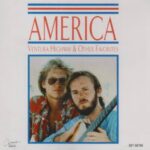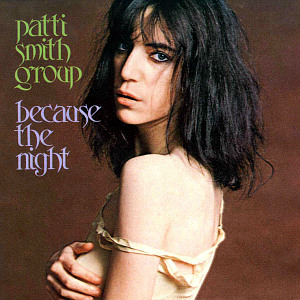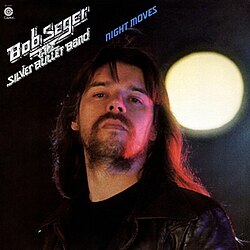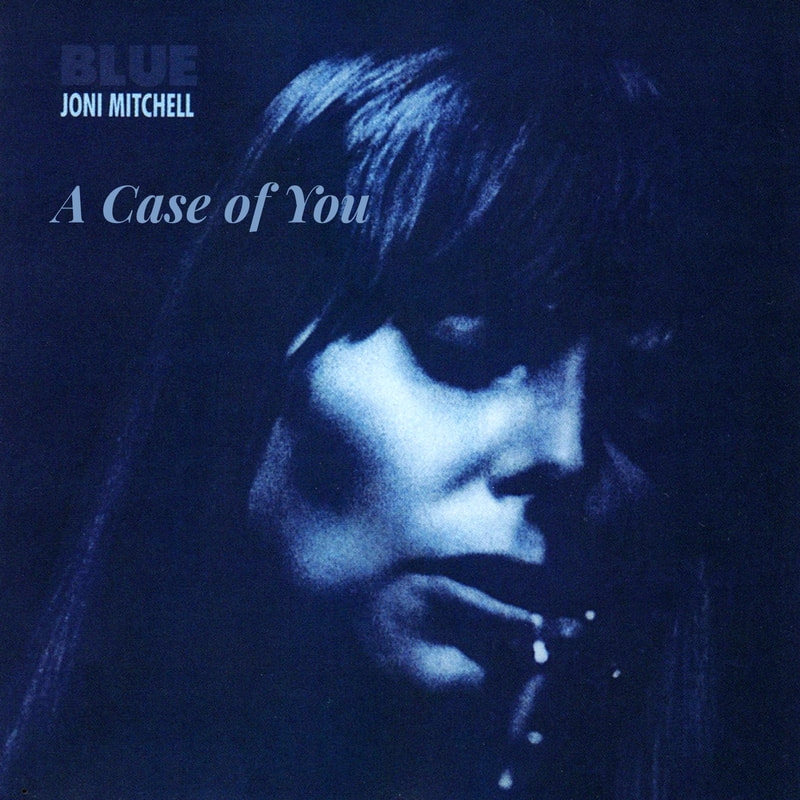 “Ventura Highway” by America, released in 1972 as part of their Homecoming album, remains one of the quintessential songs capturing the laid-back, sun-drenched California sound of the early 1970s. Written by Dewey Bunnell, the song encapsulates a sense of freedom, optimism, and wistful reflection that has resonated with generations of listeners. Its breezy acoustic guitar riffs, harmonious vocals, and evocative imagery combine to create a track that is as much a mood as it is a song—a musical escape to coastal highways, endless skies, and the intoxicating allure of the American road. Over fifty years later, “Ventura Highway” endures as an emblem of soft rock’s golden era, a timeless anthem for anyone chasing the horizon.
“Ventura Highway” by America, released in 1972 as part of their Homecoming album, remains one of the quintessential songs capturing the laid-back, sun-drenched California sound of the early 1970s. Written by Dewey Bunnell, the song encapsulates a sense of freedom, optimism, and wistful reflection that has resonated with generations of listeners. Its breezy acoustic guitar riffs, harmonious vocals, and evocative imagery combine to create a track that is as much a mood as it is a song—a musical escape to coastal highways, endless skies, and the intoxicating allure of the American road. Over fifty years later, “Ventura Highway” endures as an emblem of soft rock’s golden era, a timeless anthem for anyone chasing the horizon.
The song opens with an immediately recognizable acoustic guitar riff, a shimmering, sunlit motif that evokes the feeling of driving along a coastal highway with the windows down. Bunnell’s intricate fingerpicking, combined with the gentle strumming patterns, creates a sense of forward momentum while maintaining a relaxed, contemplative vibe. This riff serves as the song’s defining musical signature, instantly transporting listeners into its idyllic California landscape. Behind it, Dan Peek’s rhythm guitar and Gerry Beckley’s complementary harmonies enrich the texture, weaving a tapestry of sound that is simultaneously delicate and expansive.
Vocally, “Ventura Highway” showcases the tight harmonies that became America’s hallmark. Bunnell’s lead vocals are warm and slightly wistful, conveying both nostalgia and hope. Beckley and Peek’s harmonies float above and around the lead, providing a lush, layered quality that enhances the song’s ethereal feel. The vocal arrangement, reminiscent of the close harmony styles of the Everly Brothers and Crosby, Stills & Nash, emphasizes the song’s gentle, free-spirited nature while also highlighting the technical skill and musicality of the band. The voices intertwine seamlessly, creating an atmosphere that is both intimate and expansive, capturing the dual sense of personal reflection and universal wanderlust.
Lyrically, “Ventura Highway” is both evocative and enigmatic. The song paints a vivid picture of life on the road, freedom in motion, and the beauty of natural landscapes. Lines like “Ventura Highway in the sunshine, where the days are longer / The nights are stronger than moonshine” conjure sunlit highways and warm coastal nights, blending literal imagery with poetic, almost dreamlike sensibilities. Bunnell has noted that the lyrics were inspired by childhood memories of his father’s work trips and a longing for a sense of freedom and escape. Yet the song transcends its autobiographical roots, inviting listeners to insert themselves into its narrative, whether driving along the Pacific Coast, reflecting on personal journeys, or simply basking in the feeling of possibility and openness it evokes.
Musically, “Ventura Highway” exemplifies the soft rock genre at its peak, blending acoustic folk sensibilities with pop accessibility and a subtle sophistication in arrangement. The song’s instrumentation is deceptively simple, relying on acoustic guitars, bass, light percussion, and harmonized vocals, yet the execution is flawless. The subtle percussive touches, provided by drummer Mike Botts, and Peek’s melodic bass lines provide rhythmic grounding without overpowering the airy feel of the track. Each element works in concert to create a sense of spaciousness, perfectly complementing the song’s thematic emphasis on wide-open skies, freedom, and unencumbered movement.
The production, handled by George Martin—the legendary producer best known for his work with The Beatles—adds a layer of polish and clarity to the song without diminishing its organic, intimate qualities. Martin’s skillful approach ensured that every instrument and vocal line was balanced and distinctly audible, preserving the warmth and immediacy of the band’s performance while enhancing the overall sonic depth. The result is a track that feels both timeless and distinctly of its era, capturing the early 1970s’ soft rock aesthetic while maintaining a universal appeal that continues to resonate today.
“Ventura Highway” also demonstrates America’s talent for crafting memorable melodic hooks. The chorus, with its gently ascending melody and evocative repetition of “Alligator lizard / In the air,” is quirky yet irresistible, sticking in the listener’s mind long after the song has ended. The phrasing and cadence of the lyrics, combined with the harmonic layering, create a singable, almost hypnotic quality. Even listeners unfamiliar with the band can find themselves humming the melody or recalling its lines effortlessly, which is a testament to the song’s enduring appeal and melodic genius.
The song’s use of imagery and metaphor is particularly effective. While grounded in literal references—Ventura Highway, sunlight, open roads—it also evokes a broader sense of longing, adventure, and introspection. The repeated references to nature, travel, and motion create a sense of journeying not only through physical landscapes but through emotional and psychological spaces as well. Listeners can interpret the lyrics as a meditation on freedom, nostalgia, or the pursuit of dreams, giving the song a timeless quality and allowing it to resonate across multiple contexts and generations.
Culturally, “Ventura Highway” became emblematic of a certain American ideal: the road as a symbol of freedom, exploration, and possibility. Its release in 1972 coincided with a period in American music and culture characterized by reflection, experimentation, and a desire to return to nature and simplicity in the wake of social upheaval and political turmoil. The song captured the zeitgeist of its era while also offering a sense of escape, providing listeners with a sonic sanctuary and a reminder of the joys of movement, light, and open spaces.
Commercially, “Ventura Highway” achieved significant success, reaching number eight on the Billboard Hot 100 and solidifying America’s place as a major force in early 1970s soft rock. Its popularity was bolstered by the band’s previous hits, such as “A Horse With No Name” and “Sister Golden Hair,” which had already established America as masters of melodic, harmony-driven pop-rock. Yet “Ventura Highway” distinguished itself through its evocative lyricism, lush harmonies, and sun-soaked imagery, ensuring that it would endure as one of the band’s most beloved and recognizable songs.
Live performances of “Ventura Highway” highlight its enduring charm and the band’s musicality. On stage, the song allows for subtle improvisations in vocal harmonies and guitar embellishments, creating a sense of freshness even for audiences familiar with the studio version. The communal aspect of the chorus often encourages sing-alongs, reinforcing the song’s mood of openness and shared experience. The live renditions capture the essence of the track’s narrative—the feeling of driving along sunlit highways, embracing freedom, and reflecting on life’s journeys—while showcasing the technical skill and cohesion of the band.
The influence of “Ventura Highway” extends beyond America’s own catalog. Its melodic sensibilities, harmonic richness, and integration of folk and soft rock elements influenced contemporaneous acts such as The Eagles, Crosby, Stills & Nash, and Fleetwood Mac, while also leaving a mark on future generations of singer-songwriters who sought to capture a similar sense of reflective, sunlit musical storytelling. Its blend of accessible melody with lyrical depth set a standard for soft rock and demonstrated the power of subtlety, nuance, and restraint in crafting enduring pop music.
One of the song’s most striking features is its ability to evoke emotion without relying on dramatic instrumentation or overtly theatrical vocal delivery. The magic lies in its restraint—the delicate guitar interplay, the understated percussion, and the tender harmonies create an intimate yet expansive soundscape. This approach allows the song’s imagery, melody, and lyrical narrative to take center stage, giving listeners the space to inhabit the world of the song and connect with its emotional core.
The production and arrangement choices also reinforce the song’s sense of timelessness. George Martin’s nuanced touch ensures clarity and depth without overwhelming the simplicity of the acoustic foundation. Subtle effects, like reverb and light layering of harmonies, enhance the ethereal quality of the track, creating a sonic atmosphere that mirrors the expansiveness of the coastal highways and skies the lyrics describe. The song’s careful balance of acoustic authenticity and studio polish exemplifies the production sophistication that has helped it endure across decades.
“Ventura Highway” also resonates as a meditation on nostalgia and memory. The imagery of highways, sunlight, and open spaces can be interpreted as both literal and metaphorical representations of life’s journey, evoking feelings of longing, reflection, and hope. Bunnell’s lyricism encourages listeners to consider their own paths, dreams, and moments of introspection, giving the song a deeply personal yet universally relatable quality. Its blend of specificity and abstraction allows the track to remain emotionally relevant, regardless of temporal or cultural context.
The song’s instrumental texture contributes to its sense of place and mood. The interplay between acoustic guitars, subtle electric accents, and harmonized vocals creates a layered soundscape that evokes the coastal landscapes of California. The rhythmic drive of the bass and drums adds momentum and structure, while the acoustic flourishes provide warmth, intimacy, and a tactile sense of movement. Every element is carefully orchestrated to convey both the physical act of traveling and the emotional experience of journeying through memory, emotion, and imagination.
Over the years, “Ventura Highway” has remained a staple on classic rock radio, in film soundtracks, and across streaming platforms, ensuring that it continues to find new audiences. Its melodic accessibility, lyrical richness, and evocative imagery make it a timeless example of soft rock’s golden era, while also serving as a benchmark for artists seeking to combine lyrical sophistication with musical simplicity and emotional resonance. The song’s enduring popularity underscores its universal appeal and the lasting impact of America’s songwriting craft.
Ultimately, Ventura Highway by America is more than just a soft rock classic—it is a sonic embodiment of freedom, reflection, and the joy of open roads. Its lush harmonies, evocative lyrics, and sunlit instrumentation capture a feeling of endless possibility, transporting listeners to a world of coastal drives, radiant skies, and introspective journeys. The song’s timeless appeal lies in its ability to balance simplicity with sophistication, intimacy with expansiveness, and nostalgia with hope, making it a quintessential anthem of both the early 1970s and the enduring human desire for connection, exploration, and freedom.
From its opening guitar riff to the closing harmonies, “Ventura Highway” invites listeners to embark on a journey—not only along the literal highway it celebrates but along the roads of memory, emotion, and imagination. It is a song that resonates because it speaks to universal experiences: the thrill of travel, the longing for connection, and the reflective joy of moments that pass too quickly. Decades after its release, it remains a timeless testament to America’s songwriting genius and the evocative power of music to capture both place and emotion.
The legacy of Ventura Highway endures because it is at once specific and universal. Its imagery is grounded in the sunny, coastal landscapes of California, yet its emotional resonance transcends geography, time, and culture. Its melodies are immediately memorable, yet the song rewards repeated listening with


